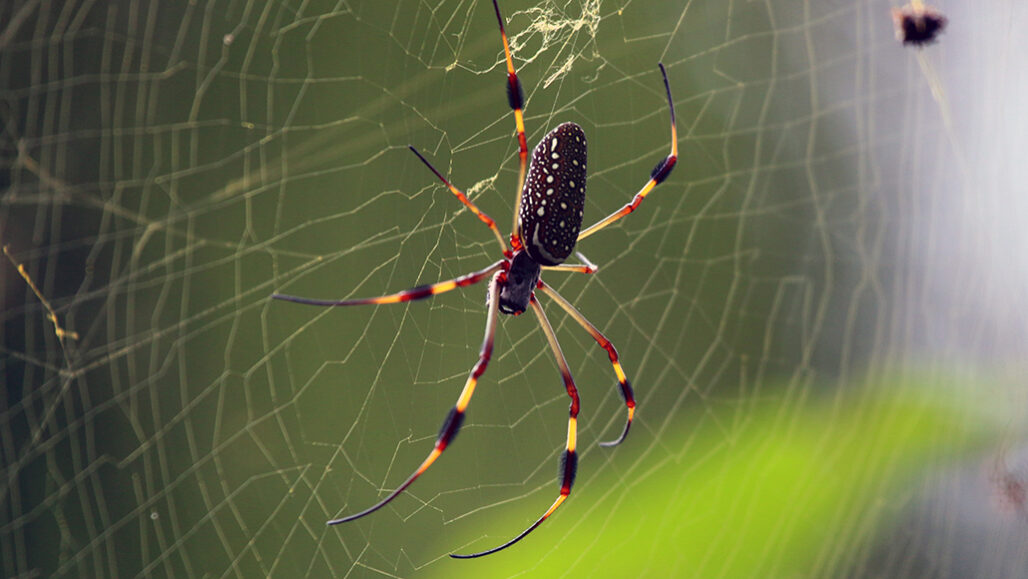
Palma and his colleagues analyzed the active genes and proteins in the silk glands of banana spiders (Trichonephila clavipes), a kind of orb weaver, and found proteins resembling known neurotoxins. The neurotoxins may make the webs paralytic traps. Palma believes the prey-catching webs of other species probably have similar neurotoxins.
The researchers also confirmed that fatty acids are present in the droplets. These acids, Palma thinks, are the toxins’ way into prey. The molecules may dissolve the insect’s waxy outer cuticle, the chief barrier to topical toxins.
Palma plans to have his students dive deeper into smaller, as of yet unidentified proteins his team found. He thinks they may help keep the prey alive until the spider’s ready for a fresh meal.
Palma plans to have his students dive deeper into smaller, as of yet unidentified proteins his team found. He thinks they may help keep the prey alive until the spider’s ready for a fresh meal.
This is really cool! Spiders may benefit from having a live meal, so paralyzing the prey is a way to make this happen.
ReplyDelete